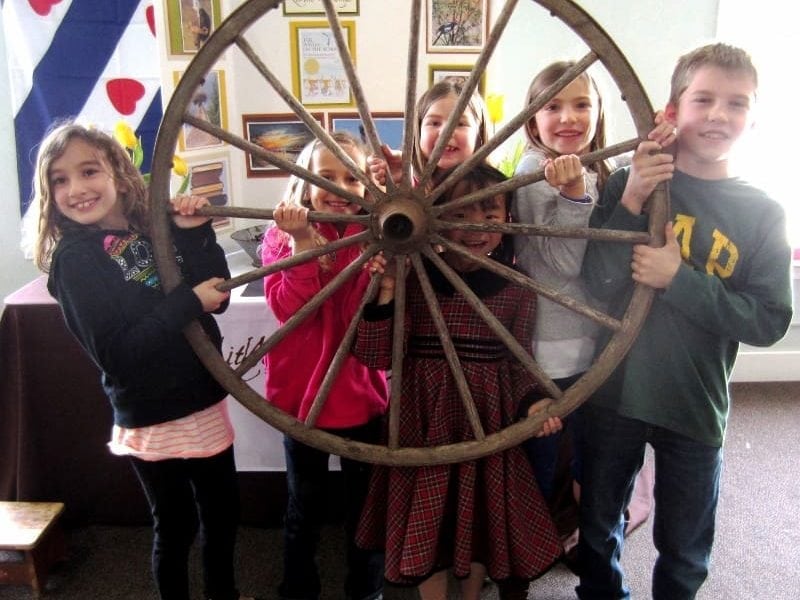Creative Teaching Ideas for
by Meindert DeJong (1954)
ON THIS PAGE: LitWits hands-on activity ideas and instructions, teaching topics, learning links, and more. Scroll on!
There are many ideas in this Hands-on Fun section—don't feel you have to do them all! Go with whatever works best for you and your kids. If you want to focus on a particular teaching point, our Takeaway Topics section can help you narrow down the activity options. And you can enhance discussions during any activity with audiovisual aids from Learning Links or story objects from Prop Ideas.
In our workshops, we do all the activities on this page, in order of the story's narrative arc. You might find our narrative arc worksheet helpful for sequencing your activities, teaching the important concept of the arc, and helping kids learn how Meindert DeJong put The Wheel on the School together.
Set includes all worksheets and activity printables
Start your experience of this story by introducing the kids to the author, so kids can asee the connections between his lived story and his written story.
Below is our kid-friendly biography of the brilliant Meindert DeJong—an author who won just about every possible major award for children's books, yet remains largely unknown. Our short video is a great discussion starter, and we've got a worksheet for author note-taking, too.
Set includes all worksheets and activity printables
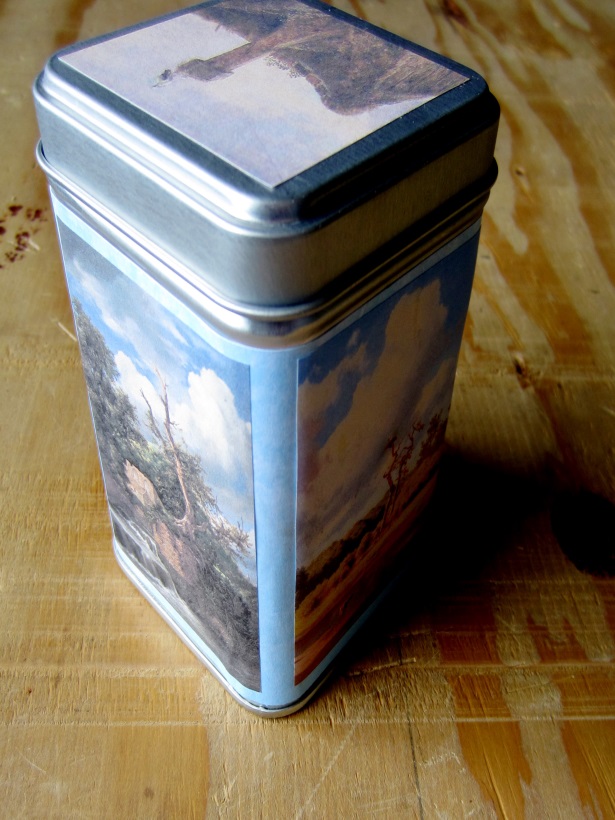
Set includes all worksheets and activity printables
Set includes all worksheets and activity printables
BookBites
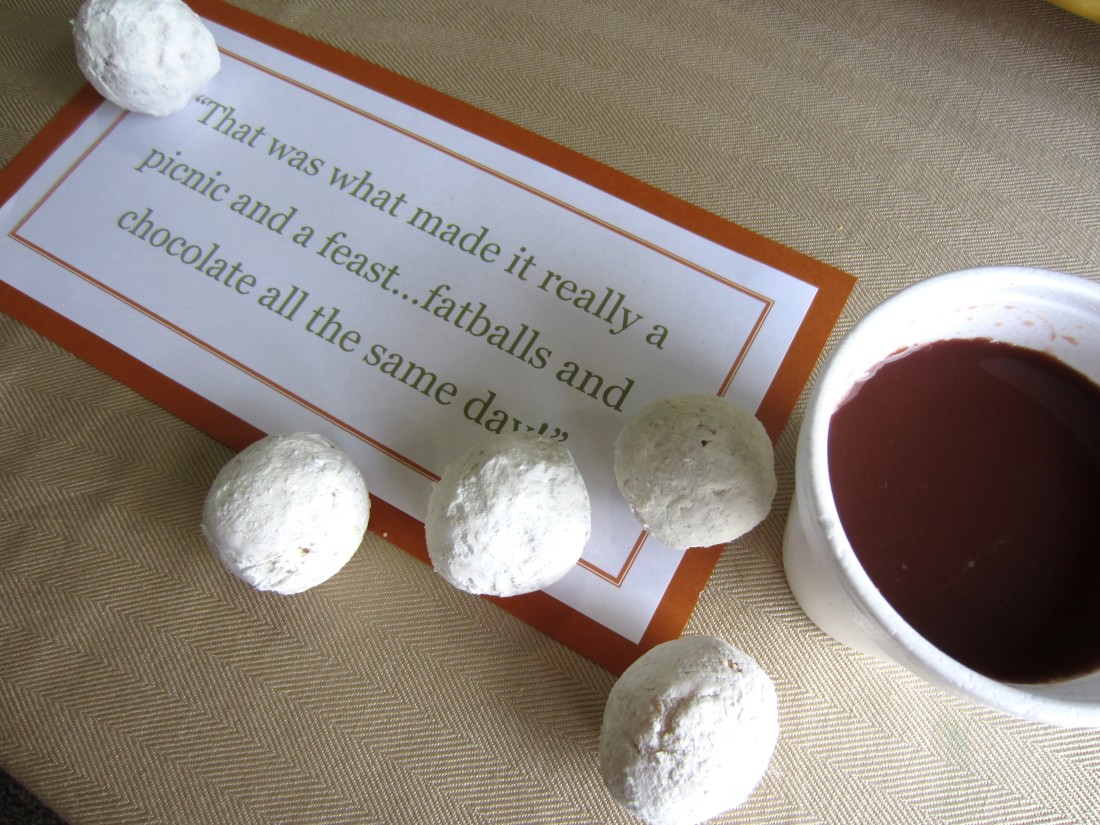
Set includes all worksheets and activity printables
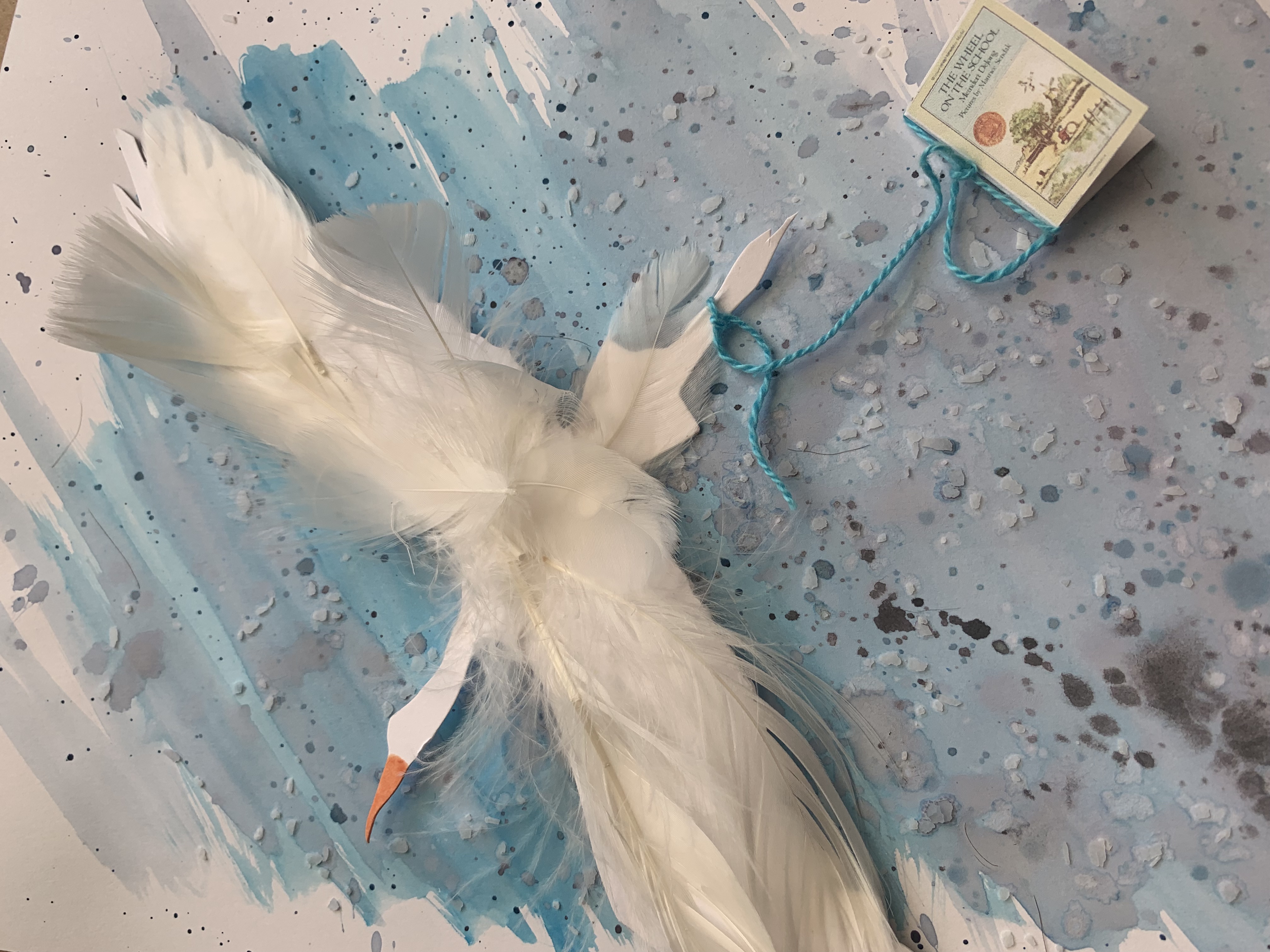
Set includes all worksheets and activity printables
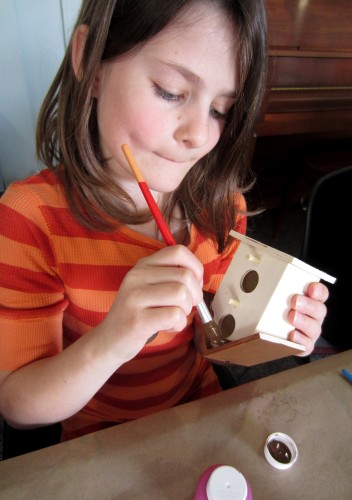
Set includes all worksheets and activity printables
Set includes all worksheets and activity printables
Takeaway 1
Takeaway 2
Takeaway 3
Explore these links to supplement your reading experience, research points of interest, and prompt tangential learning opportunities.
About the Book & Author
The LitWits Author Chat - video biography of Meindert DeJong:
Autobiographical essays about DeJong’s childhood (published in Origins, Calvin College, MI):
“When I Was a Kid, part I” pp 34-42 Vol. 28 No. 1 (2010)
“When I Was a Kid, part II” pp 35-45 Vol. 28 No. 2 (2010)
Goodreads reviews
Great Books for Children blog review
Bio page from Winning Authors: Profiles of the Newbery Medalists
by Kathleen Long Bostrom
Biography - New Netherland Institute
Photo and biographical info on Wikipedia
Obituary in The New York Times, 1991
LitWits biography of the author
Story Supplements
Differences between Holland and the Netherlands
Dikes of the Netherlands as a model for flood control (New York Times article)
North Sea off Friesland (World Heritage site)
Historic map of Leeuwarden, capital of Friesland
Traditional village in North Holland
West Frisian, the language of Friesland (the only province that has its own language)
West Frisian alphabet the children would have learned
Demographics of the Netherlands
National anthem of Friesland, Holland
Big messy stork nest
Pair of European White Storks
Sounds of White Storks “clapping” (scroll down)
White Stork flying - photo
Kid-friendly overview of storks
“Why the Stork Loves Holland” - World of Tales
Der Klapperstorch by Carl Spitzweg, 1885
History and explanation of Dutch dikes
Video – Sport of Fierljeppen (ditch jumping”)
History of Fierljeppen (ditch jumping)
Unique Friesland farmhouse architecture
Friesland national anthem- background info
Shore images from Ternaard, Friesland
Magpie raiding a cherry tree, with article
Eurasian magpie, including sound (under photo)
Old Friesland farmhouse
Itinerant Peddler in a Village by Dutch artist Cornelius Dusart
A cooper repairing a barrel in Holland - photo
Video – how tides work, explained with food!
Good, easy-to-understand explanation of how tides work, with helpful diagrams
Recipe for Dutch fatballs
Wooden Dutch footstove
Video: Flock of white storks flying
See our Pinterest board for this book
